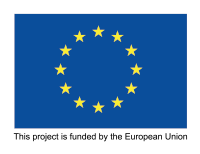
Using Art without Despairing: On the Trail of Creative Power
The panel brought together rights-based civil society organizations and artists to explore the effects of art in different disciplines and find creative solutions to social problems. Freda Manweiler from Smashing Times, Özlem Işıl from Altyazı Cinema Association, Kerem Çiftçioğlu from Hafıza Merkezi, Aslı Alpar from Muzır.org, Communicator and writer Fehmi Ağduk and CultureCIVIC representative Ayşe Eraslan were our guests and we discussed the transformative power of art with these speakers coming from different perspectives.
Art: A Journey from Despair to Hope
Throughout history, art has been one of the most effective ways of addressing social issues. Today, however, the bombardment of information and a constant state of crisis can cause individuals to become desensitized instead of taking action. One of the key questions of the panel was: How can we use art strategically to capture people's attention and mobilize them?
Freda Manweiler talked about how Smashing Times, through theater and film, contributes to peace processes in post-conflict societies. “Art is a mirror of society and telling the right stories is the key to social healing,” Freda said, emphasizing the critical role storytelling plays in building trust and confronting trauma in post-conflict processes. She emphasized the necessity of making art accessible, especially for marginalized groups to be heard. Freda also expressed her intention to collaborate with human rights defenders in Turkey and shared her experiences in this field:
"Small projects are the seeds of big changes. It is very important to see and share the transformative power of art in these processes."
Art and Humor: The Smiling Face of Protest
Cartoonist and rights defender Aslı Alpar was with us at the panel. In her speech, Aslı drew attention to the role of humor and protest art in social resistance. In particular, she emphasized that humor can increase social solidarity by going beyond being a way of coping with difficult issues. A statement Aslı shared perfectly summarized the power of protest art: “Art is not just a form of expression; it is also a process that blends resistance, emotion and transformation.”
Aslı stated that art is everyone's right and that aesthetics is not exclusive to the elite. She also expressed that art can be used more effectively in new and creative ways in rights-based struggles.

Memory and Confrontation: Constructing Social Memory through Art
Kerem Çiftçioğlu, who thinks about communication in terms of hope-based communication and storytelling, shared how the Memory Center uses art as a tool of confrontation and memory. He gave examples from the production process of the “Dargeçit” documentary on enforced disappearances and emphasized the importance of telling traumatic stories with aesthetic sensitivity. Kerem drew attention to the ethical dimension of art with the following words:
“Art requires approaching traumatic events with an aesthetic sensitivity. Any work done without this sensitivity is both ethically and socially problematic.”
In Hafıza Merkezi's work, art is a tool for building social memory while at the same time building bridges of empathy between individuals.
Empathy and Dialogue with Cinema
Özlem Işıl from Altyazı Cinema Association talked about how independent cinema can be used as a tool for dialogue and empathy. In particular, the video activism work done as part of the Fasikül program aimed to build a bridge of political empathy between audiences that celebrates differences. Özlem expressed the importance of this process in the following words:
"In order to create empathy in the audience, Altyazı Fasikül tries to avoid approaches such as making the subjects who tell the stories in the video more likable and taming the political content. It adopts a political and radical understanding of empathy that does not ignore political, class and gender-based differences, conflicts and contradictions, but rather starts with their acceptance. In this sense, it sees empathy as an important tool to break down social prejudices."
 Imagination and Social Participation
Imagination and Social Participation

Communicator and writer Sait Fehmi Ağduk discussed how creative projects can increase social participation. Fehmi, who enables individuals to imagine the future of their communities through projects such as “ The Dream Newspaper”, emphasized that art is not only a means of individual expression, but also a means of building a collective future.
Art and Activism: Inspiring Examples from Turkey
CultureCIVIC representative Ayşe Eraslan talked about the collaborative projects of artists and civil society organizations in Turkey. She stated that focusing on local producers can increase the impact of art and offer more creative solutions to social problems. Ayşe's projects demonstrated once again that art is not only a form of expression, but also a transformative force.

Conclusion The Transformative Power of Art
When used correctly, art not only conveys messages but also raises social awareness, builds hope and encourages individuals to take action. The panel discussions in Ankara reminded us once again of this potential of art and creativity.
Using art without despair is an effective way to confront and resolve complex social issues. This process can only be possible with the contribution of all segments of society, not just creative individuals. Today, it is up to us to build a more just, inclusive and hopeful future together, inspired by the power of art...

STGM Studio
We have good news for CSOs that want to produce video content. In our studio in our office, you can shoot your videos and get editing support.






